This article is part of the Centrical Labs series, where we publish findings from our data research team. We analyze employee performance and engagement using behavioral science and real-time data, then share the results to help you increase your team’s success. Subscribe and follow Centrical on LinkedIn to stay updated on the latest insights.
What if you could nearly double the amount of coaching your managers provide without adding headcount or extending work hours?
That’s precisely what happened when we gave a group of frontline team leaders access to Centrical’s AI Assistant. The data tells a compelling story: managers with AI support delivered 88% more coaching actions than their peers.
The Challenge: Too Many Teams, Too Little Time
Frontline managers face a constant struggle: they know coaching drives performance, but finding time to deliver personalized, meaningful coaching to each member of their team feels nearly impossible. Instead, they rely on scheduled coaching sessions and generic feedback.
But what if AI could make coaching easier, faster, and more effective?
Inside Centrical Labs: Our Methodology
For this study, we analyzed millions of data points from a global financial services organization over a 6-week period during the launch of Centrical’s AI Assistant for Team Leaders.
Centrical’s AI Assistant for Team Leaders is a conversational AI tool that summarizes team performance and delivers data-driven recommendations for coaching and recognition, empowering managers to act in real time. With the ability to translate insights into immediate actions, it helps leaders identify who needs support, celebrate top performers, and sustain consistent, personalized coaching at scale.
Here are a few examples of what team leaders can ask the AI Assistant:
- Who needs my help this week?
- Review Candice’s CSAT performance details
- Suggest coaching for Bernard on CSAT
- Help me draft a kudos message for Marco
- Emphasize Marco’s consistent top ranking
- Mention Marco’s impact on the team’s average
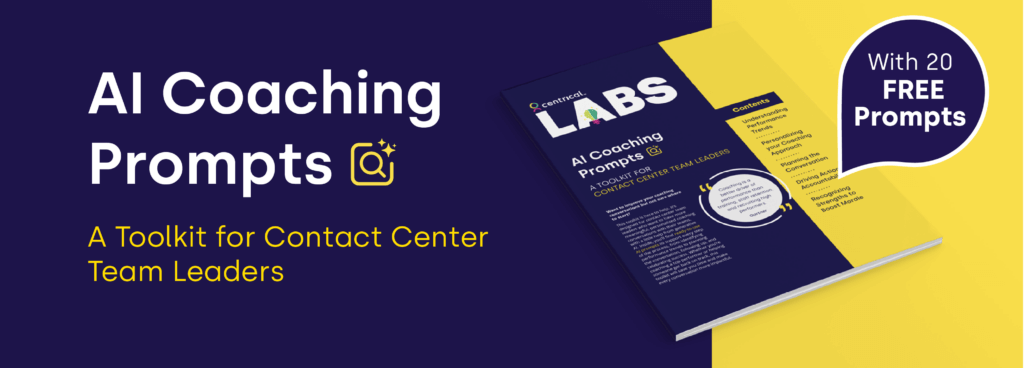
We examined and compared two groups:
Control Group: General Coaching Population
All team leaders using Centrical’s platform without access to the AI Assistant
Experiment Group: AI Assistant Users
Team leaders given access to the AI Assistant feature
We tracked several key metrics to compare team leader behavior before and after the introduction of the AI Assistant:
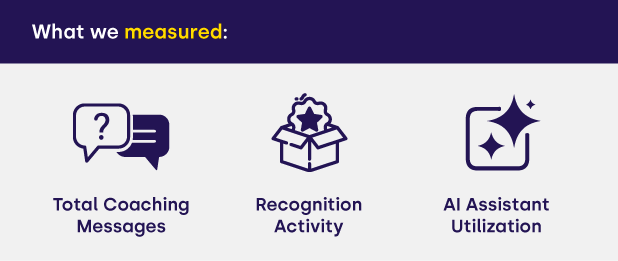
- Total coaching action messages – including both bulk and individual coaching conducted during the period (individual coaching is personalized one-on-one guidance, while bulk coaching actions are sent to multiple team members at once)
- Recognition activity – number of kudos messages sent to team members
- AI Assistant utilization –usage frequency, interaction patterns, and adoption rates
A coaching message initiates a conversation on the team member’s performance and may suggest completing a coaching action. Coaching actions typically involve completing a learning module or simulation tied to a KPI that needs improvement, sending personalized feedback, or launching a performance improvement challenge.
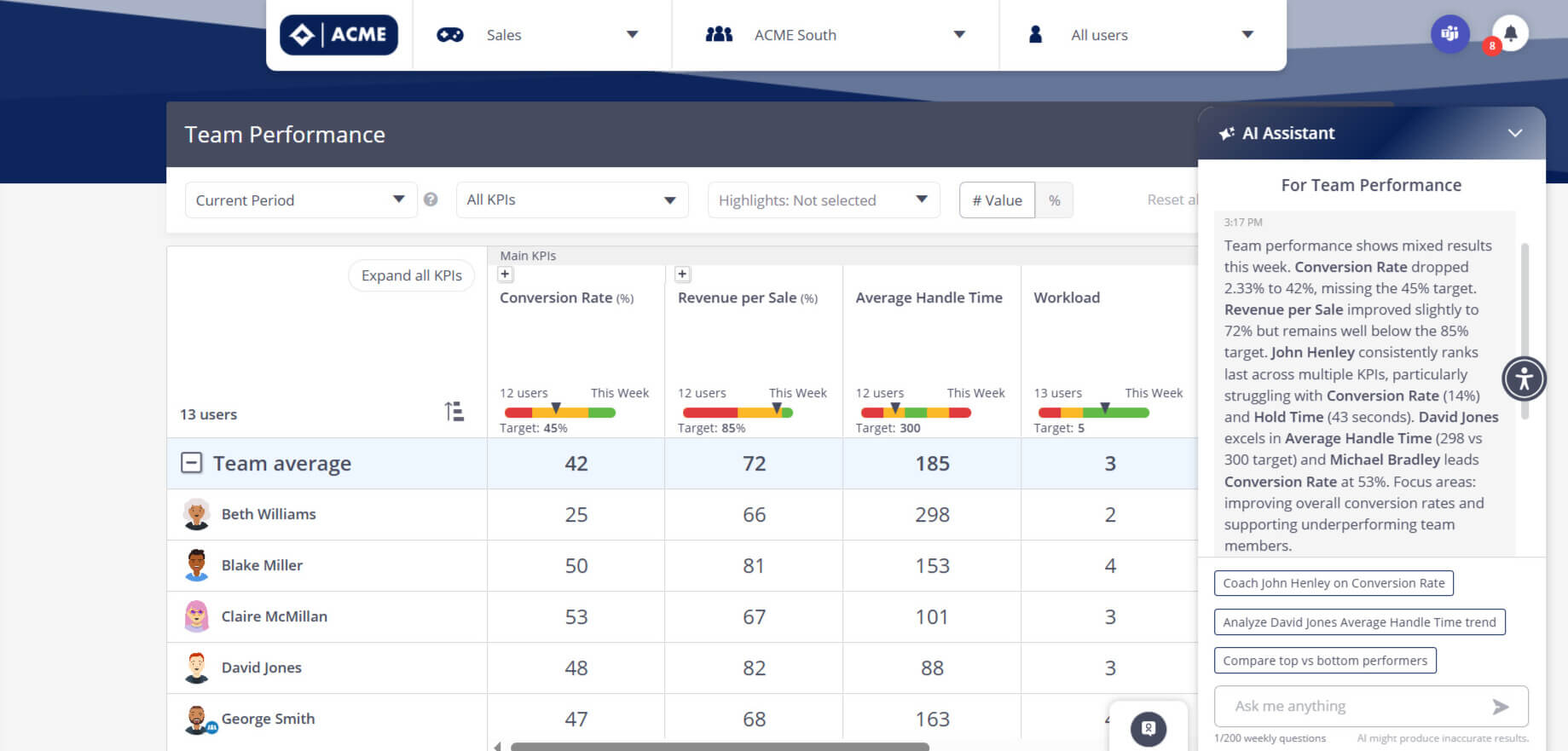
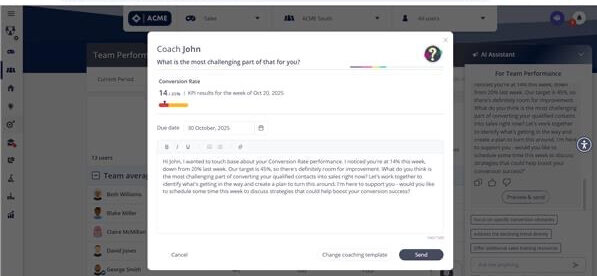
Finding #1: AI Boosts Managers’ Coaching Activity
So, what did the data in our analysis show?
The group of team leaders with access to the AI Assistant saw an increase of +88% more coaching on average compared to the team leaders without AI access.
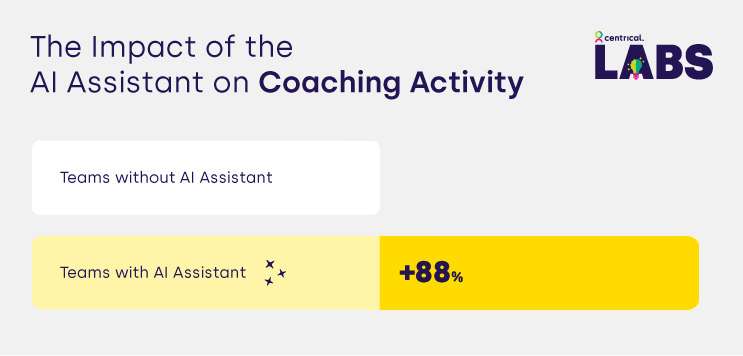
Here’s what’s also interesting: The AI Assistant encouraged more overall coaching activity, even beyond the AI-triggered interactions, as it guides managers by identifying coaching opportunities and recommending follow-up prompts.
This suggests that easy access to data insights and performance analytics motivates managers to coach more frequently overall.
Finding #2: AI Drives More Recognition
Next, we looked at how team leaders used the “kudos” feature within the platform. Kudos are virtual “high fives” that managers can give team members to recognize great work, celebrate wins, or simply show appreciation. They’re a quick, meaningful way to boost motivation and reinforce positive behaviors across the team.
(Kudos can also be used by team members to celebrate their peers.)
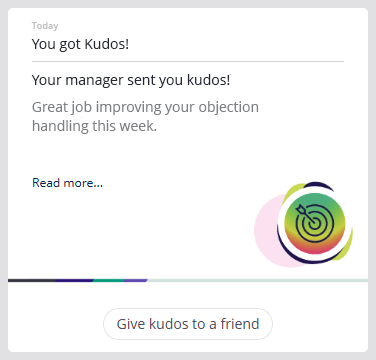
The data shows that team leaders with AI access sent +25% more kudos on average than their peers.
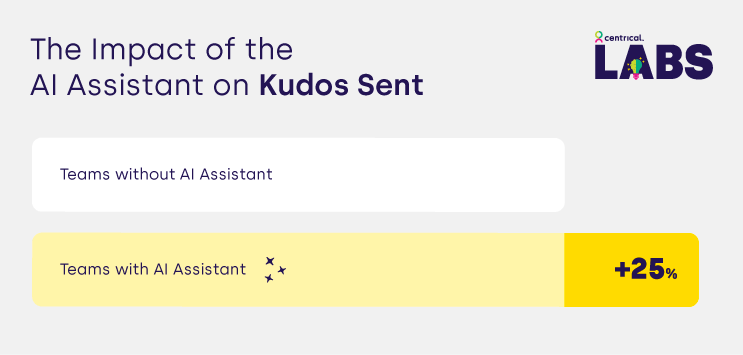
Here’s what’s remarkable: the increase in kudos was for the most part led by the introduction of the AI Assistant, which made the recognition of high-performing team members more efficient and precise.
Employee recognition matters: Gallup reports that it “motivates, provides a sense of accomplishment and makes employees feel valued … it also has been found to increase productivity and loyalty to the company, leading to higher retention.”
Why It Matters: The Impact of AI-Powered Coaching on Frontline Leadership
These findings reveal something fundamental about frontline management.
Managers want to coach their team members more. They just need help doing it.
The AI Assistant didn’t replace managers or automate the human element of coaching. Instead, it removed friction by making coaching and recognition:
✅ Faster: Personalized coaching cold be drafted and sent in seconds instead of minutes.
✅ More personalized: AI surfaced which employees needed coaching or recognition based on real-time performance data.
✅ More specific: Each coaching moment included concrete metrics, trends, and examples to guide discussion.
✅ More consistent: Coaching occured more frequently because it seamlessly fit into manager’s and employee’s daily workflows.
This shows that, when managers have the right tools and timely insights, they don’t need to be told to coach more—they just do.
How To Get Started: Making AI Work for Your Team Leaders
The impact of AI depends on how well it’s integrated into a manager’s day-to-day workflow. Based on our research, here are five steps organizations can take to help managers build lasting habits around AI-assisted coaching:
- Start with clear use cases.
Train your managers on specific scenarios where AI helps most:
- Identifying team members who need additional support
- Spotting outliers and unexpected performance patterns (like a high performer struggling with one specific metric)
- Drafting personalized coaching messages tied to recent performance
- Creating metric-specific kudos and recognition messages
- Analyzing performance trends across the team to identify coaching and training priorities
- Emphasize speed and precision.
Position AI as a time-saver that also improves the quality of coaching. Your managers appreciate tools that help them act quickly while increasing the accuracy and relevance of their feedback.
- Make AI part of the coaching workflow.
Integrate AI prompts and insights into the same flow where managers already review performance and take action. The goal is to make AI-assisted coaching feel like a natural next step, not a separate process or extra task.
- Track both quantity and quality.
Measure coaching frequency but also track completion rates and performance outcomes.
- Share success stories.
Adoption spreads when managers see peers achieving measurable results with AI-assisted coaching. Highlight their stories, develop internal champions, and make those wins visible across teams.
When managers have the right tools, insights, and structure, AI amplifies coaching. The data shows that even small workflow integrations can lead to meaningful increases in coaching frequency, quality, and recognition behaviors. The next step is enabling your managers to put these insights into action.
Explore practical tools and frameworks to help you get started:

Engage and motivate your frontline teams
Improve performance with an AI-powered digital coach
Deliver world class CX with dynamic, actionable quality evaluations
Boost performance with personalized, actionable goals
Nurture employee success with the power of AI
Listen and respond to your frontline, continuously
Drive productivity with performance-driven learning that sticks
Drive agent efficiency, deliver client results
Keep tech teams motivated and proficient on products and services while exceeding targets
Maintain compliance while building customer happiness and loyalty
Enlighten energy teams to boost engagement
Engage, develop, and retain your agents while driving better CX
Improve the employee experience for your reservations and service desk agents

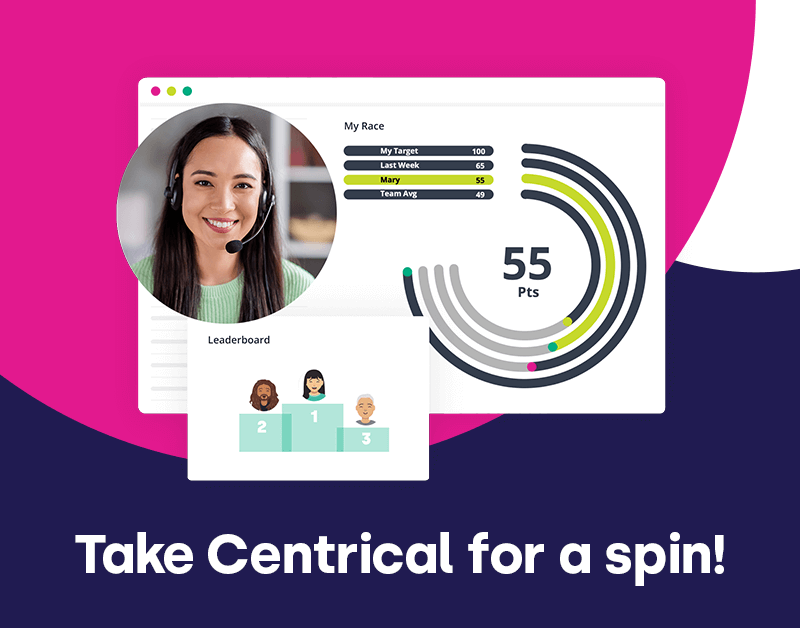
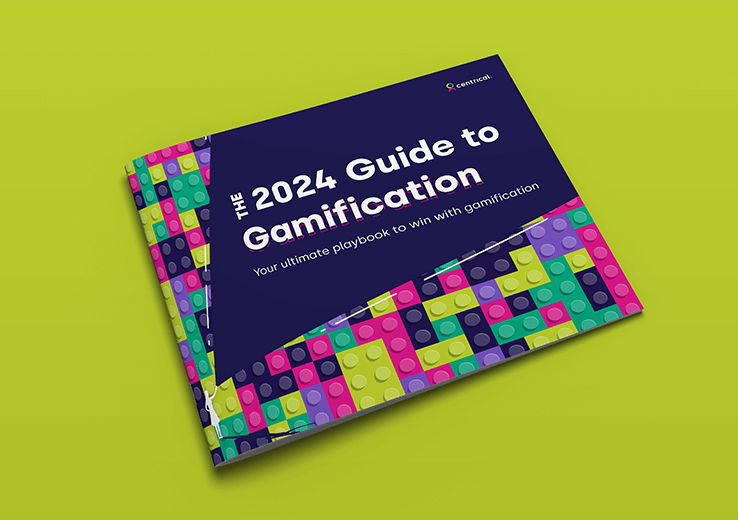








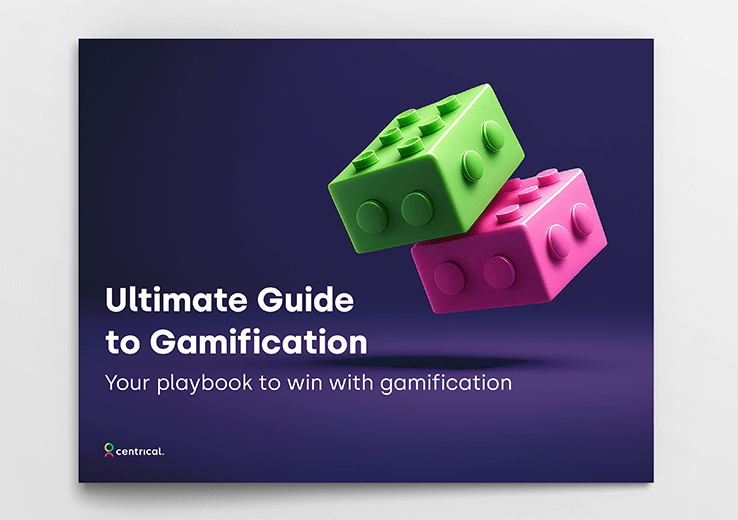



 Madeleine Freind
Madeleine Freind
 Natalie Roth
Natalie Roth Linat Mart
Linat Mart












 Doron Neumann
Doron Neumann Gal Rimon
Gal Rimon Daphne Saragosti
Daphne Saragosti Ella Davidson
Ella Davidson Ariel Herman
Ariel Herman Ronen Botzer
Ronen Botzer